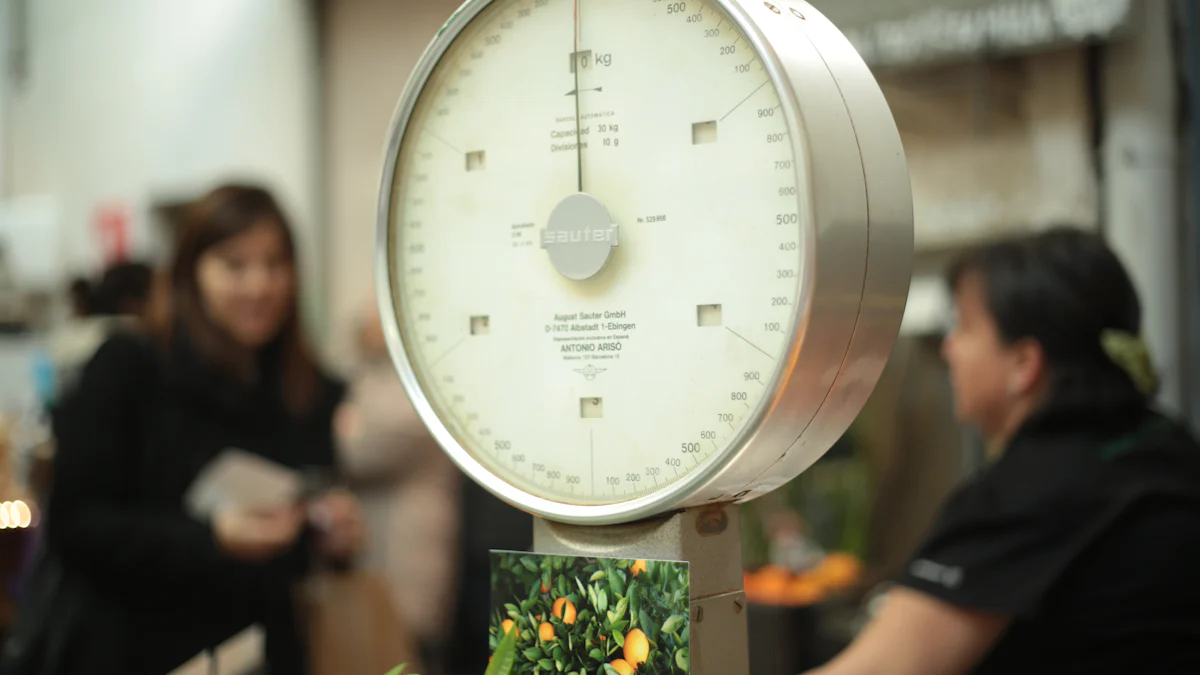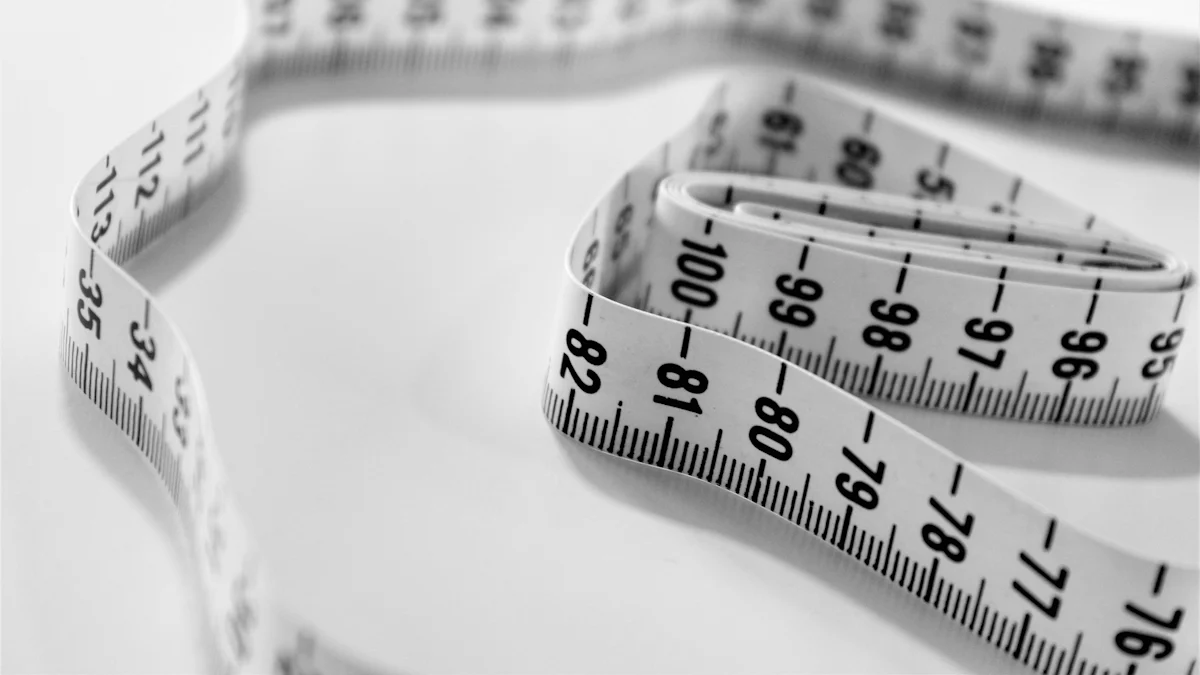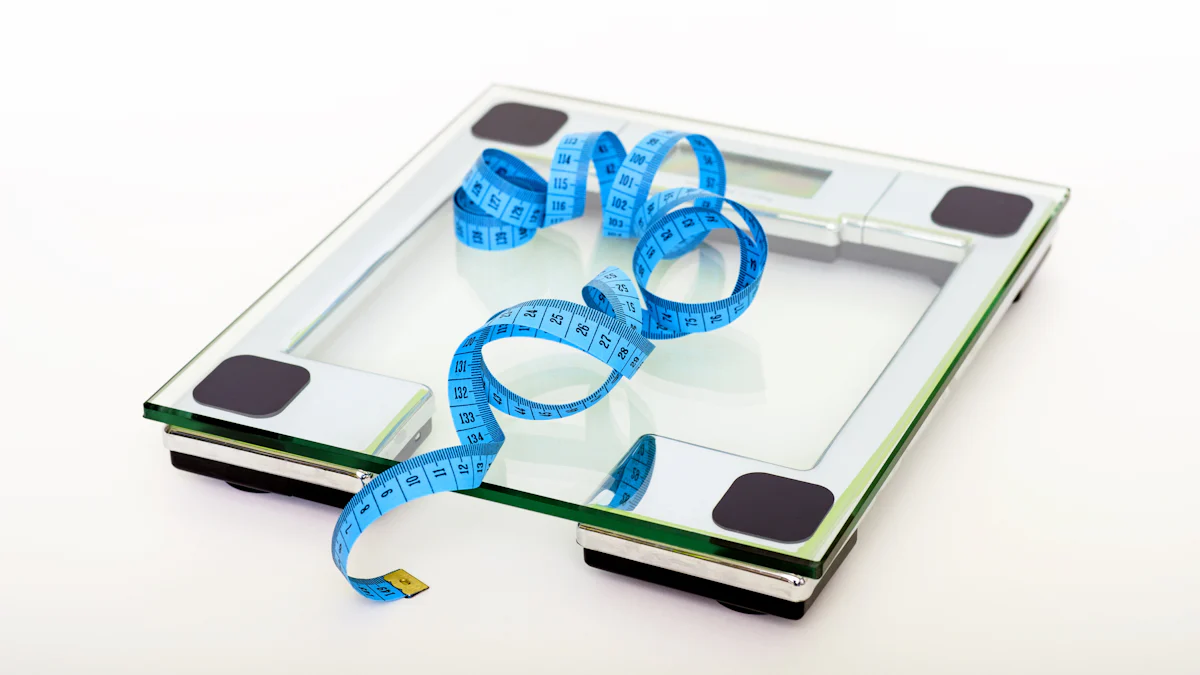What Is CTTW in Diamond Terminology

When you shop for diamond jewelry, you may wonder, "what is CTTW?" CTTW stands for Carat Total Weight, which refers to the combined weight of all diamonds or gemstones in a piece. This measurement plays a key role in diamond terminology, helping you understand the overall size and value of multi-stone jewelry.
Understanding what CTTW means directly impacts how a piece is valued. A higher CTTW often suggests greater worth, but the quality of the diamonds matters just as much. Factors like cut, clarity, and color influence the appeal of the jewelry. Misunderstanding what CTTW entails can lead to poor choices, so balancing it with these quality factors is essential.
What Is CTTW and How Does It Work?

Definition of Carat Total Weight
Carat Total Weight, or CTTW, represents the combined weight of all diamonds or gemstones in a piece of jewelry. This includes the center stone and any smaller accent stones. Jewelers express this measurement in carats, the standard unit for gemstone weight. To calculate the total carat weight, they add the carat weight of each individual stone. For example, if a ring has one diamond weighing 0.5 carats and two smaller diamonds weighing 0.25 carats each, the CTTW would be 1.0 carat.
The term "carat" has historical roots. It originates from the Greek word "kerátion," meaning carob seed. Ancient traders used carob seeds as a consistent standard for weighing small objects like gemstones. Over time, this practice evolved into the modern carat system, which is now a cornerstone of diamond terminology.
How CTTW Is Measured
Jewelers use precise tools to measure CTTW accurately. Digital carat scales are the most common, capable of measuring down to fractions of a carat. These scales ensure that even the smallest diamonds are accounted for in the total weight. Some advanced scales can also provide measurements in grams or milligrams, offering additional precision.
For rough gemstones, jewelers may use balance scales before cutting and polishing. This step ensures that the final carat weight aligns with the design of the jewelry. Accurate measurement is crucial because CTTW directly influences the value and price of the piece.
CTTW in Multi-Stone Jewelry
In multi-stone jewelry, CTTW plays a significant role in determining the overall appearance and value. Pieces like tennis bracelets, cluster rings, or halo pendants often feature multiple diamonds. The CTTW reflects the combined weight of all these stones, giving you a clear idea of the jewelry's total diamond content.
However, CTTW doesn't reveal the size of individual stones. A piece with a high CTTW might consist of many small diamonds rather than one large center stone. This distinction matters when choosing jewelry, as the arrangement and size of the stones affect both style and price. Understanding CTTW helps you make informed decisions when selecting multi-stone designs.
CTTW vs. Related Terms in Diamond Terminology
Difference Between CTTW and CTW
You might notice the terms CTTW and CTW used interchangeably in diamond terminology. Both refer to the total carat weight of all diamonds in a piece of jewelry. However, there are subtle differences in how these terms are applied. CTTW, or carat total weight, is often used for jewelry with multiple small stones, such as tennis bracelets or pavé rings. CTW, which also stands for carat total weight, includes the weight of both central and accent diamonds.
It’s important to avoid confusing these terms with "carat," which refers to the weight of a single diamond. For example:
- CTTW measures the combined weight of all diamonds in a piece.
- CTW also represents total carat weight but is commonly used in broader contexts.
- Neither term provides details about the size or quality of individual stones.
Understanding these distinctions helps you evaluate jewelry more effectively, especially when comparing pieces with varying designs.
CTTW vs. Individual Carat Weight
When buying jewelry, you should distinguish between CTTW and the carat weight of individual diamonds. CTTW represents the total weight of all stones, while individual carat weight focuses on a single diamond. This difference matters because a high CTTW doesn’t always mean larger stones. A ring with many small diamonds can have the same CTTW as one with a single large diamond.
Here’s why this distinction is crucial:
- CTTW helps you understand the overall weight of the diamonds in a piece.
- Individual carat weight gives insight into the size of each stone.
- Knowing both ensures accurate valuation and pricing.
For example, a piece with a 1-carat diamond will look different from one with ten 0.1-carat diamonds, even if both have the same CTTW. This knowledge allows you to choose jewelry that matches your style and expectations.
Why Understanding These Terms Matters
Grasping the meaning of CTTW, CTW, and individual carat weight empowers you as a buyer. It helps you make informed decisions and avoid common pitfalls. When you understand these terms, you can assess the value of diamonds more accurately. This knowledge also ensures you get the best quality for your budget.
Additionally, understanding CTTW plays a role in future considerations like insurance. A proper appraisal based on total carat weight ensures fair coverage in case of loss or theft. By learning these terms, you enhance your satisfaction with your jewelry purchases and make smarter choices.
Importance of CTTW in Jewelry

Role of CTTW in Valuation
CTTW plays a crucial role in determining the value of multi-stone jewelry. It provides a clear measure of the combined carat weight of all diamonds or gemstones in a piece. This measurement helps you gauge the overall worth of the jewelry. For example, a higher carat total weight often indicates a more valuable item, especially when paired with high-quality stones.
Jewelers rely on CTTW to price multi-stone pieces accurately. Factors like gemstone type, market demand, and the quality of the stones influence the final price. Diamonds, for instance, typically command a premium per carat compared to other gemstones. Trends in the jewelry market also affect how much buyers are willing to pay for specific CTTW levels. By understanding CTTW, you can better assess the value of a piece and make informed purchasing decisions.
Impact of CTTW on Appearance and Style
CTTW significantly affects the visual appeal and style of jewelry. It determines the overall weight and arrangement of the gemstones, influencing their sparkle and presence. A higher CTTW creates a bold and eye-catching look, while a lower CTTW allows for more delicate designs.
- Larger stones often provide a striking and elegant appearance.
- Multiple smaller stones can add intricate detail and a unique charm.
- The choice between these styles depends on your personal preferences and the occasion.
For example, a ring with a single large diamond may exude sophistication, while one with several smaller diamonds offers a more intricate and dazzling effect. Understanding how CTTW impacts style helps you select pieces that align with your taste.
CTTW and Jewelry Design Choices
CTTW influences many design choices in jewelry. A higher CTTW often results in bold designs with larger stones, while a lower CTTW allows for intricate patterns using smaller stones. For instance:
- Engagement rings with a single high-carat diamond create a dramatic focal point.
- Cluster rings or tennis bracelets use multiple smaller stones for a sparkling, cohesive look.
- Stud earrings prioritize carat weight for a simple yet bold appearance.
- Necklaces may feature a single large gemstone or several smaller ones for a layered effect.
These design choices highlight the versatility of CTTW in creating unique styles. By understanding how carat total weight shapes jewelry design, you can choose pieces that suit your preferences and enhance your collection.
Factors That Influence CTTW
Diamond Cut and Shape
The cut and shape of a diamond directly influence its contribution to the overall CTTW. The cut determines how well the diamond reflects light, creating brilliance and fire. A well-cut diamond maximizes its visual appeal, even if it has a smaller carat weight. Shapes like round brilliant cuts often appear larger due to their ability to reflect light effectively. On the other hand, shapes like emerald or cushion cuts may emphasize clarity and color over sparkle.
When selecting jewelry, you should consider how the cut and shape affect the diamond's appearance. A piece with a higher CTTW but poorly cut diamonds may lack the brilliance you desire. Balancing the cut quality with the total carat weight ensures a stunning final piece.
Clarity and Color
Clarity and color significantly impact the quality and desirability of diamonds in a piece of jewelry. While CTTW measures the total carat weight, clarity and color determine the visual appeal of each diamond. High clarity means fewer inclusions or blemishes, while color grades closer to "colorless" enhance the diamond's brilliance.
A larger carat weight with poor clarity or color may not deliver the sparkle and beauty you expect. Striking a balance between CTTW and the quality of individual diamonds ensures satisfaction with your jewelry. For example, a smaller piece with high-quality diamonds often outshines a larger one with lower-grade stones.
Setting Style and Its Effect on CTTW
The setting style of a jewelry piece influences how you perceive its CTTW. A delicate setting with a high CTTW can feel luxurious and elegant. In contrast, a robust design with the same CTTW might appear bulky. The weight distribution also plays a role. Evenly distributed diamonds create a balanced look, while uneven placement may feel awkward or clunky.
When evaluating jewelry, consider how the setting complements the diamonds. A well-designed setting enhances the overall appearance and ensures the CTTW contributes to a cohesive style. Organizations like the GIA and AGS follow strict guidelines to ensure accurate reporting of carat weight and other attributes, maintaining transparency in the diamond industry.
Practical Tips for Buying Jewelry Based on CTTW
Check Certification and Documentation
When purchasing jewelry, always verify its authenticity through proper certification. Trusted gemological institutes like GIA (Gemological Institute of America) and AGS (American Gem Society) provide detailed reports about the carat total weight (CTTW) and other quality factors of the diamonds. These certifications ensure transparency and protect you from fraudulent practices.
Tip: Ask for the certification before making a purchase. It should include information about the total weight, cut, clarity, and color of the stones. This documentation guarantees that the jewelry meets industry standards.
Balance CTTW with Quality Factors
CTTW gives you an idea of the total weight of the diamonds in a piece, but it doesn’t reflect their quality. To make a smart purchase, consider the cut, clarity, and color of each stone alongside the total weight. A smaller carat weight with excellent quality often looks more stunning than a larger weight with poor attributes.
- Evaluate the cut of the diamonds. A well-cut stone sparkles more, even if it’s smaller.
- Check the clarity and color grades. High clarity and near-colorless stones enhance the overall beauty.
- Compare pieces with similar CTTW but different quality factors to find the best value.
Balancing these elements ensures you get a piece that’s both visually appealing and worth its price.
Consider the Jewelry’s Purpose and Style
Think about how the jewelry fits your personal style and its intended purpose. A higher CTTW might suit bold, statement pieces, while a lower CTTW works well for delicate, everyday designs. The setting style also plays a role in how the diamonds are displayed and perceived.
- For engagement rings, balance the center stone’s weight with the overall design.
- In earrings or necklaces, ensure the CTTW creates visual harmony without overwhelming the piece.
- Choose designs that align with your preferences, whether you prefer a minimalist look or something more extravagant.
Note: Always evaluate how the total weight contributes to the jewelry’s overall appearance. A well-proportioned design enhances the beauty of the diamonds and complements your style.
Ask Questions About the Stones and Settings
When buying jewelry, asking the right questions ensures you make an informed decision. The stones and settings in a piece of jewelry play a major role in its appearance, durability, and value. Understanding these details helps you choose a piece that matches your expectations.
Start by asking about the quality of the diamonds. Inquire about their cut, clarity, and color. These factors determine how the diamonds sparkle and how visually appealing they are. For example, a poorly cut diamond may appear dull, even if it has a high carat weight. Ask if the diamonds have been graded by a reputable gemological institute like the GIA. Certification provides assurance about the quality and authenticity of the stones.
Next, focus on the setting. Ask how the diamonds are secured in the jewelry. Popular settings include prong, bezel, and pavé. Each style offers unique benefits. A prong setting allows more light to pass through the diamond, enhancing its brilliance. A bezel setting provides extra protection, making it ideal for everyday wear. Understanding the setting style helps you evaluate the piece’s durability and design.
You should also ask about the maintenance requirements. Some settings, like pavé, may require more care to prevent stones from loosening. Knowing this in advance helps you plan for long-term upkeep. If you’re considering diamond rings, ask how the setting complements the overall design and whether it suits your lifestyle.
Finally, don’t hesitate to ask about the total carat weight (cttw) and how it’s distributed across the piece. This ensures you understand the balance between the size of individual diamonds and the overall look of the jewelry. Asking these questions empowers you to make a confident purchase.
Tip: Always ask for a magnified view of the diamonds and settings. This allows you to inspect the details closely and ensures you’re satisfied with the craftsmanship.
Understanding CTTW is essential when evaluating diamond jewelry. It provides valuable insight into the total weight of gemstones, helping you assess their value and aesthetic appeal. However, focusing solely on CTTW can lead to overlooking other critical factors like cut, clarity, and color. Balancing these elements ensures you select jewelry that combines beauty, quality, and value.
Always review certifications from trusted gemological institutes to verify the accuracy of CTTW and the quality of the diamonds. This step builds confidence in your purchase and ensures transparency. By asking the right questions and considering the overall design, you can make informed decisions that align with your style and expectations.
Tip: Prioritize craftsmanship and quality alongside CTTW to find jewelry that stands out in both appearance and value.
FAQ
What does CTTW mean in simple terms?
CTTW stands for Carat Total Weight. It represents the combined weight of all diamonds or gemstones in a jewelry piece. This measurement helps you understand the total size of the stones, making it easier to evaluate the jewelry's value and appearance.
Does a higher CTTW always mean better jewelry?
Not always. A higher CTTW indicates more diamond weight, but quality matters too. Poorly cut or low-clarity diamonds can reduce the jewelry's appeal. Balancing CTTW with factors like cut, clarity, and color ensures you get a beautiful and valuable piece.
How can I verify the accuracy of CTTW?
Ask for certification from trusted institutes like GIA or AGS. These documents detail the total carat weight and other quality factors. Reviewing this information ensures transparency and helps you confirm the jewelry's authenticity and value.
Is CTTW important for single-stone jewelry?
No, CTTW is more relevant for multi-stone designs. For single-stone jewelry, focus on the individual carat weight, cut, clarity, and color. These factors determine the stone's beauty and value more than the total weight.
Can two pieces with the same CTTW look different?
Yes, they can. Jewelry with many small diamonds may have the same CTTW as a piece with one large diamond. The arrangement, cut, and quality of the stones affect the overall appearance, so always consider these details when comparing pieces.
See Also
A Guide to Engagement Ring Diamond Cuts
Comparing Tungsten Diamond Rings and Traditional Options
A Look at Various Wedding Ring Diamond Styles

